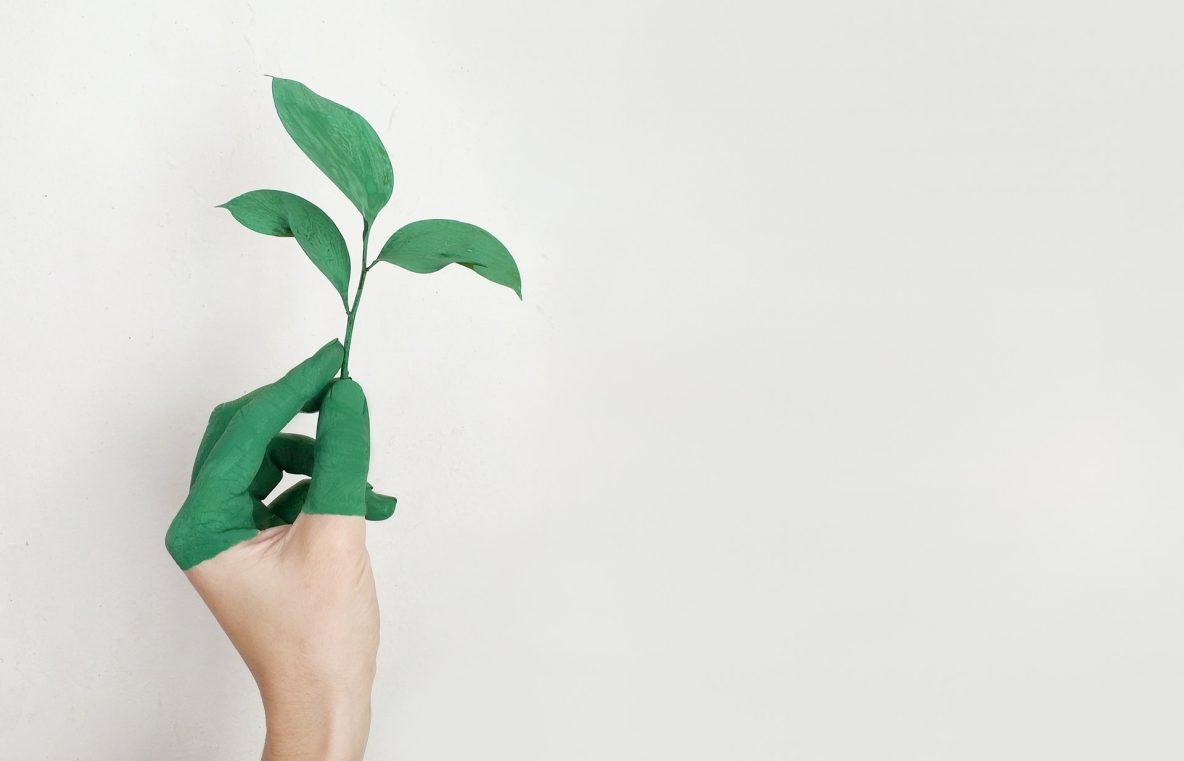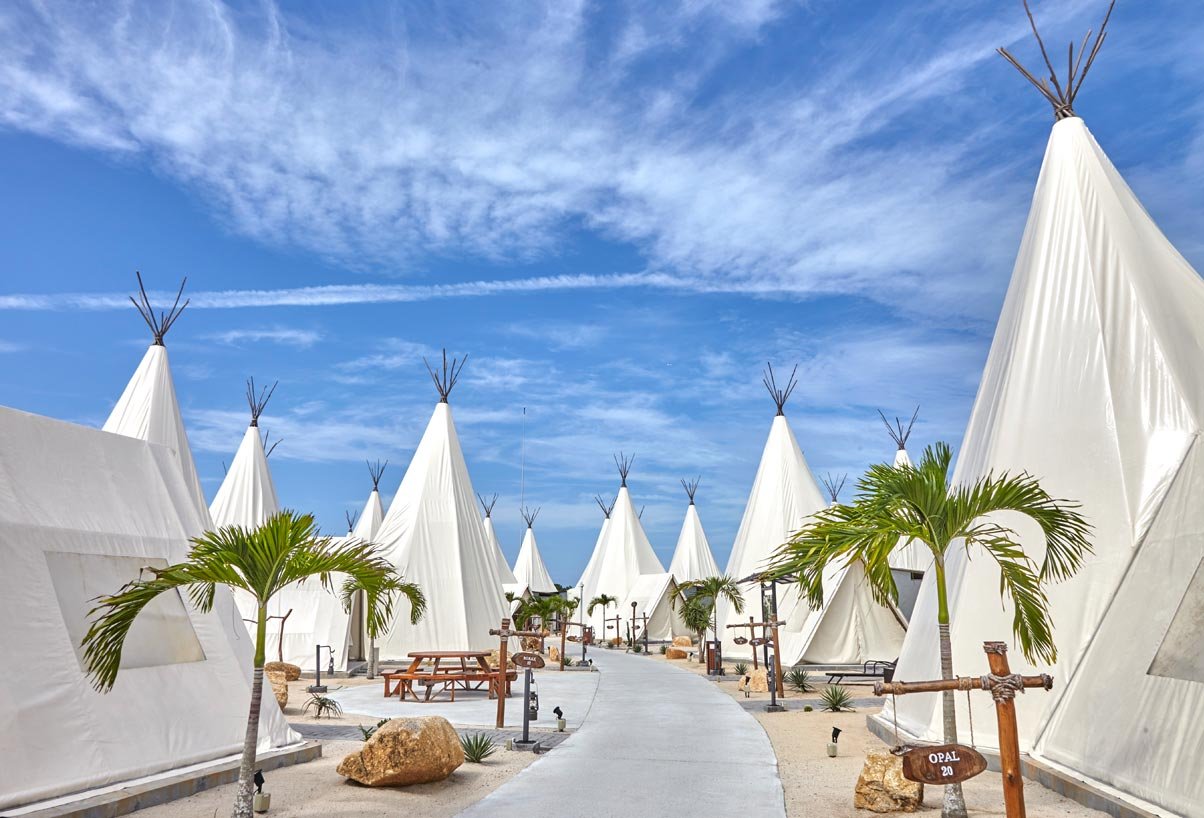If you are an eco-conscious traveler looking for a holiday destination that prioritizes eco-conscious hospitality, conservation, and local community empowerment, then one such travel destination is Bintan Island. Located in the Riau Archipelago of Indonesia, Bintan Island is home to many eco-friendly resorts such as The ANMON Resort Bintan, a popular glamping resort. This resort offers guests an exclusive glamping experience away from the hustle and bustle of city life and encourages visitors to begin their journey to authenticity in this unique desert adventure.
At The ANMON Resort Bintan, guests will find themselves lodging in cozy teepee-style tents with sustainable bathroom amenities that are provided in recyclables as well as a skylight fixture in the bedroom that illuminates the area with natural light. Amenities and event spaces on the premises have also been built following their environmentally sustainable ethos. On top of that, the resort is strategically situated within Treasure Bay, a 338-hectare waterfront resort city that operates in a sound and sustainable way.
Ensuring the Maintenance of Bintan’s Ecology Through Sustainable Development
Bintan is known for its beautiful beaches and historical sites, rich diversity of flora and fauna as well as friendly locals from a wide range of ethnicities. To provide future generations the chance to appreciate Bintan as we do today, and to ensure that its culture, people, and environment continue to be respected, sustainable development is crucial.
1. Preserving Bintan Island’s Flora and Fauna
One reason Bintan has grown in popularity amongst tourists in recent years is its rich and diverse flora and fauna. With vegetation mostly left untouched, the tropical rainforests and mangrove forests on the island are lush with unique plant and animal species. Bintan is home to many endemic wildlife such as birds, mammals, reptiles, and amphibians which are protected by the law against illegal poaching.
2. Dugong and Seagrass Conservation Program
Since 2008, numerous studies have been made on seagrass habitat in Bintan regency and from these studies, a discovery in the existence of dugongs, a marine mammal with a fluked tail, in the area has been made. Unfortunately, dugong is classified as a species vulnerable to extinction. Not only are they threatened by habitat destruction, but they are also often victims of accidental entanglement in fishing nets.
As such, in a collaboration between the Ministry of Maritime Affairs and Fisheries
(MMAF), Indonesian Institute of Sciences (LIPI), Bogor Agricultural University (IPB),
World Wildlife Fund (WWF Indonesia), and the Global Environment Facility (GEF), efforts have been made to conserve the dugong and their habitat to ensure that these species of marine mammals do not go extinct.
Tourism in Bintan remains one of the best avenues for regional income that can contribute to conserving the dugong and seagrass ecosystems.
3. Ecology Supports the Development of Marine Tourism
With 96 percent of the Riau Islands Province (where Bintan is located) consisting of open seas, it is no surprise that marine tourism is one of the main attractions of tourism on Bintan Island. Bintan accounts for the third largest number of foreign tourists in Indonesia.
Numerous beaches are stretching across the island and each has its unique charms. On the eastern shores of Bintan Island, there is Trikora Beach with towering palm trees, sandy white beaches, and crystal-clear waters. Just across from Trikora Beach is White Sands Island, a private island surrounded by water so blue and clear you could see marine life flitting and swimming in the waters.
Together with ecology and sustainable development, the aim is to increase the visits of local and foreign tourists while preventing pollution and maintaining the ecological quality of Bintan Island.
4. Unique Traditions Supported by Ecology
Bintan is rich in culture and heritage. One of the most unique tribes in the area is the sea tribe, an indigenous, nomadic tribe that lives in small boats and travels from one place to another, never settling. With a life that revolves around the sea, they source food from the ocean and sail the waters surrounding the Riau Islands, very rarely coming to land.
Panglong Village, Berkakit located on the northeastern tip of Bintan Island, is a village built by the Indonesian government to entice the sea tribe to return to land. The village is now occupied by direct descendants of the old sea tribe.
In addition, there is also the manungkah tradition, a tradition of looking for shellfish using wooden boards (also known as mudflat surfing) that are steeped in the history of the people from Gisi Village. Sourcing for shellfish is one of their livelihoods and the tradition of manungkah was passed down from generation to generation amongst the villagers.
As Bintan Island perseveres in its efforts to develop sustainably while protecting its peoples’ culture and heritage, The ANMON Resort Bintan also strives to do its part in making a positive difference in the ecology and environment of Bintan.

